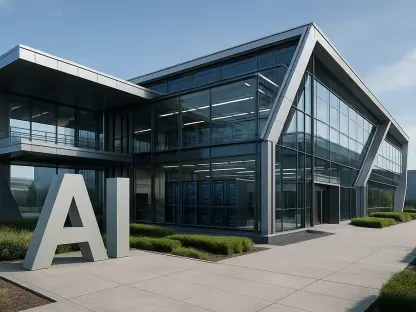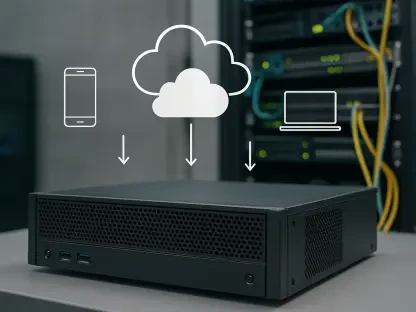I’m thrilled to sit down with Matilda Bailey, a renowned networking specialist with deep expertise in cutting-edge technologies like cellular, wireless, and next-gen solutions. With years of experience in optimizing IT infrastructure, Matilda has a unique perspective on how businesses can navigate the complexities of data center management, particularly when it comes to controlling costs in colocation environments. Today, we’ll dive into strategies for reducing data center rental expenses, exploring everything from location choices to server optimization and negotiation tactics.
How do you see companies benefiting from renting data center space in a colocation facility compared to building their own private data center?
Renting space in a colocation facility offers a huge advantage for companies that want access to top-tier infrastructure without the massive upfront investment of building their own data center. You’re essentially sharing the cost of power, cooling, and security with other tenants, which can be a game-changer for businesses with tight budgets or those scaling quickly. Plus, colocation often provides flexibility—you can scale up or down as needed without being locked into owning a facility that might not match your long-term needs. It’s also about speed; getting a private data center up and running can take years, while colocation lets you deploy almost immediately.
What are some key factors that drive the cost of renting data center space, and how do they impact a company’s decision-making?
Several factors play into rental costs, but I’d say location is at the top of the list. Where a data center is situated affects everything from land prices to energy costs and even taxes. Then there’s the scale of your deployment—the more space or power you need, the more you’ll pay, though bulk deals can lower the per-unit cost. Network connectivity options and additional services, like managed support or enhanced security, also bump up the price. Companies have to weigh these against their budget and performance needs. For instance, if low latency is critical, they might prioritize proximity over cost savings.
Why do data center rental prices vary so drastically between different regions, and how can companies use this to their advantage?
The variation in pricing often comes down to supply and demand, along with local economic conditions. Regions with a high concentration of data centers, like Silicon Valley, benefit from economies of scale—providers can spread out costs for power and connectivity across many clients, keeping rates competitive despite pricey real estate. On the flip side, remote or less developed areas might have cheaper land but higher operational costs due to limited infrastructure. Companies can leverage this by strategically choosing locations that balance cost with performance needs, maybe opting for a hub with lower rates even if it’s not the closest to their base.
Can you explain what server consolidation involves and how it helps reduce rental expenses in a data center?
Server consolidation is all about streamlining your hardware footprint. It means reducing the number of physical servers you’re running by combining workloads onto fewer, more efficient machines, often using virtualization. This directly cuts rental costs because you’re using less rack space and consuming less power, which are major billing factors in colocation. Beyond savings, it can simplify management and maintenance. The trick is doing it right—without overloading systems or compromising performance—which takes careful planning and sometimes upgraded hardware to handle the consolidated load.
What are some challenges businesses face when trying to consolidate their servers, and how can they overcome them?
One big challenge is the complexity of migrating workloads. Applications aren’t always designed to share resources efficiently, and legacy systems can be particularly stubborn, risking downtime or data loss during the move. There’s also the fear of performance hits if too much is packed onto too few servers. To tackle this, businesses should start with a thorough audit of their infrastructure to identify redundancies and underused servers. Working with IT specialists to test consolidations in a controlled way—maybe using a staging environment—can prevent major disruptions. It’s also worth investing in modern tools that monitor performance post-consolidation to catch issues early.
How does consolidating multiple data centers into a single location impact costs, and what should companies watch out for?
Consolidating data centers into one facility can lead to significant savings because you’re reducing the total amount of rented space and potentially negotiating better rates with a single provider due to higher volume. It also cuts down on overhead like staffing and duplicate services across multiple sites. However, companies need to be cautious about latency issues for users far from the chosen location. There’s also the risk of a single point of failure—if that one data center goes down, everything’s affected. Mitigating this with robust backup plans and network optimization tools, like high-speed interconnection, is critical.
What role does negotiation play in securing better data center rental rates, and how can businesses approach it effectively?
Negotiation is huge because listed prices for data center space are often just a starting point. Providers are usually open to deals, especially if you’re bringing in a large deployment or committing to a long-term contract. The more equipment or space you need, the more leverage you have—providers want to fill their facilities. For businesses, it’s about doing homework: compare rates across providers, understand your own needs versus what’s being offered, and don’t be afraid to ask for discounts or to unbundle unnecessary services. Even smaller players can sometimes score deals by emphasizing future growth potential to the provider.
What’s your forecast for the future of data center rental costs as technology and demand continue to evolve?
I think we’re going to see a mixed bag. On one hand, demand for data center space is skyrocketing with cloud adoption and data-intensive technologies like AI and IoT, which could drive prices up in high-demand areas. On the other hand, advancements in energy efficiency and server density mean providers can host more clients in the same space, potentially stabilizing or even lowering costs in some regions. We’ll also likely see more competition as new data center hubs emerge in less traditional areas, offering cheaper alternatives. Businesses will need to stay agile, regularly reassessing their colocation strategies to capitalize on these shifts.









